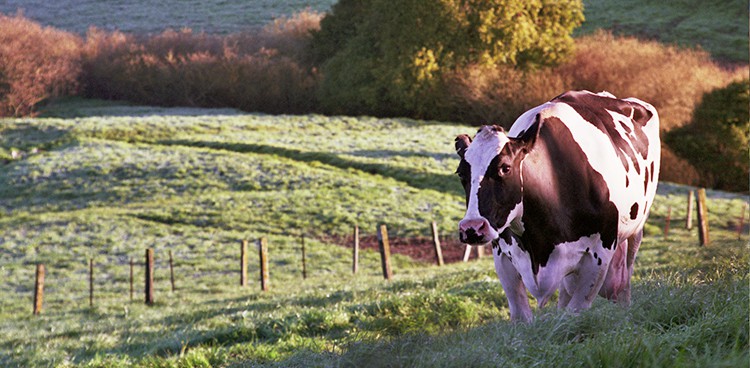
Origin
With its characteristic black-and-white spotted hide, the Holstein is truly the most iconic of dairy cow breeds, and with good reason: Holsteins comprise more than 90 percent of the US dairy population and are found grazing everywhere from the California coast to the rolling hills of Vermont. The origins of the breed can be traced to the black cows and white cows of the Batavians and Friesians—migrant tribes who settled the coastal Rhine region more than two thousand years ago. Over time, these two kinds of cows were selectively bred together with the aim of developing an animal that would make the best use of limited land by yielding generous quantities of both milk and meat. The result was the efficient, high-producing black-and-white dairy cow we know today as the Holstein. (In the UK, Australia, and Europe the breed is called Friesian).
History in America
Holstein cows unofficially arrived in the United States in the 1620s along with the Dutch farmers who settled in the fertile Hudson and Mohawk River valleys. The first documented importation occurred more than one hundred years later, and by the late 1800s the stage was set for Holsteins to become a major part of the American dairy experience. With the expansion of the American West came increased demand for large, docile, hearty cattle that could handle a wide variety of conditions. The Holstein fit the bill perfectly and soon became the cow of choice for the vast majority of American dairy farmers.
Appearance
Holsteins are large, eye-catching animals easily recognized by their distinctive black-and-white piebald markings. Red-and-white coloring also appears in the breed, the result of a recessive gene. As with fingerprints, the precise pattern of black and white on any given Holstein is unique to that animal—no two are exactly alike. Holsteins are also extremely large, even by bovine standards: A healthy Holstein calf weighs 90 pounds or more at birth, and a mature Holstein cow weighs about 1,500 pounds and stands 58 inches tall at shoulder height.
Milk & Cheeses
Thanks in part to their large size, Holsteins are known for producing a larger volume of milk than any other breed of cow. Top-producing Holsteins milked twice a day can yield up to 67,914 pounds of milk in a year, although the average production is closer to 22,833 pounds per year. Holstein milk is lower in fat (3.64%) and protein (3.06%) than other breeds and so is well suited to cheesemaking. While nearly any variety of cheese can be made from Holstein milk, Edam and gouda are two of the most common traditional varieties.
Feature Photo Credit: Wil Edwards





One thought on “Farm Animal: Holstein Cows”